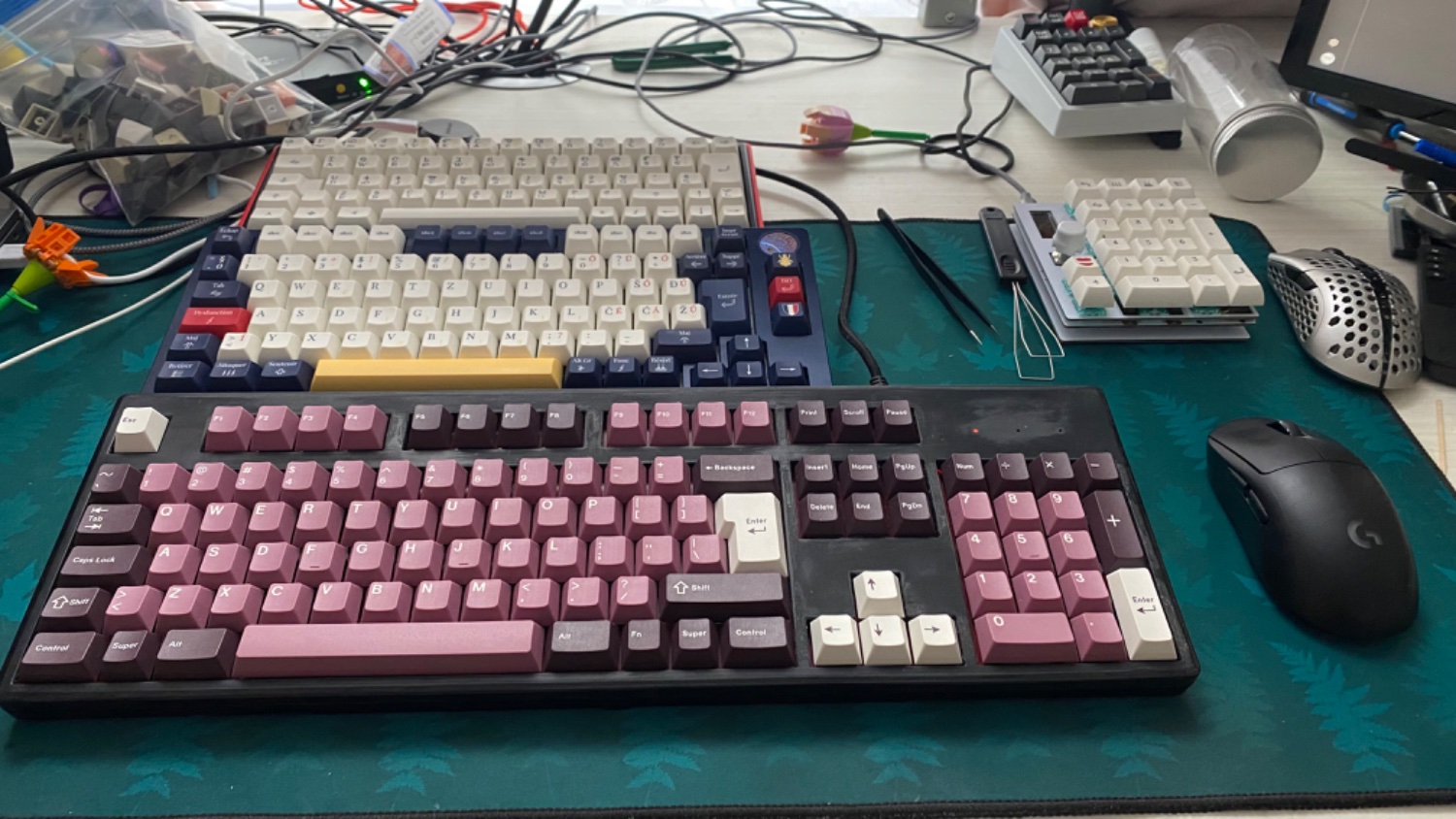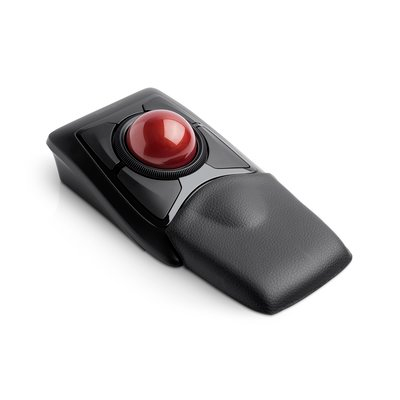I’m not a true mechanical keyboard enthusiast. I mean I like a good keyboard for typing code, so I rolled with model-Ms in the 80s and 90s, then some expensive Cherry keyboard I only recently retired because it was utterly spent (and it was PS/2), and now I happily use a Wooting Two HE.
I’m so glad the mechanical gaming keyboard scene has developed so much: it means there’s a plethora of really excellent keyboards for the rest of us who don’t play games.
But something utterly baffles me: why are high-quality keyboards getting smaller?
There’s a lot more keyboards without the numpad and the block of middle keys - whatever they’re called - or with the middle keys reduced or squashed up awkwardly on the side, than full-size plain old 102- or 104-key layout keyboards. What’s wrong with the numpad? Isn’t more keys generally better?
Back in the days, I bought the original Happy Hacking keyboard because it kind of made sense to maneuver around in our server room with a small keyboard that took up less space. Typing on it drove me up the wall but it was convenient to carry. And I guess it was also good option for going to LAN parties with a smaller backpack. But other than that, for a keyboard that never leaves your desk, I don’t get it.
Are there other advantages to smaller keyboards? Genuine question! I’m not dumping on smaller keyboards: to each his own and if you’re happy with yours, more power to you. I’d just like to know why you prefer smaller.
70% is the happiest middle ground for me: still have function row so less modifier-holding required (vertical space was never the issue) & tighter than tenkeyless while not giving up keys. Luckily these are readily sold & the default laptop keyboard setup. Numpads IMO are a niche peripheral that are rarely used & add stress to mouse usage since that numpad has to be crossed over every time for the average user; separate numpads can be bought and located somewhere more ergonomic.
Smaller keyboards:
- Encourage you to move your hands less. Part of this is allowing your mouse to be closer, especially if you’re right handed.
- Aesthetically look cleaner and less cluttered
Point 2 is absolutely subjective, though. Personally, I think a full size or TKL look a lot better than a compact. It’s too distracting seeing something “missing” from a traditional setup. Though, I also like to have my keyboard and mouse a good distance from each other and spread out, rather than close and centered in front of me.
This is it for me, I basically don’t use those keys daily and can access them via a function key when I rarely need them, so I’m gonna prioritise the aesthetics and compactness.
For me, having the symbols I use in a function layer is better than having them spread around, because I don’t have to move my hands as much.
I like having more real estate for the mouse. If I need the numpad, I just reach for it.
I can live without the nav cluster. I can just Fn+arrows for pgup/dn/home/end. But can’t live without arrows.

I like having more real estate for the mouse
It seems many people who answered here also want a smaller keyboard to position the mouse closer to the centerline, or make room for the mouse.
Perhaps I should mention my own setup then: I don’t use a mouse 🙂 I use this - rather confusingly named - fabulous trackball: the Kensington Expert Mouse:

This is the best trackball ever. It’s been around for many years. People who like trackballs swear by it, and I can’t do without it.
The trackball is right up against the keyboard. So even though I use a full-size 104-key keyboard, the “mouse” is ergonomically placed and doesn’t require a lot of space.
How does a trackball hold up when playing vidya that requires a mouse normally? RTS, ARPG, Indie Rogue lites, FPS, basically anything that may require twitch, precision and traversal.
Well, I’m not much of a gamer. But I regularly play Quake1, 2 and 3/Arena - which are traditional WASD + mouse games despite being old, and I have zero trouble aiming quickly and accurately, even far targets that are single-pixels. The Kensington has a big ball that really helps for fine control.
Of course, there’s a learning curve, as with all trackballs. But once your favorite trackball becomes second nature, the (small) effort really pays off. I’ve used trackballs almost exclusively for 30 years and I’ve settled on the good old classic Kensington Expert Mouse, that’s a beloved favorite of musicians who lack desk real-estate in their MIDI setup, server room warriors like me, and just about anybody who wants a precise mouse without having to sacrifice space. Also, there is something to be said for always having the same controls at the same place all the time when you need to move the cursor: that too reduces hand fatigue.
What a coincidence. I just dusted off my quakeworld client yesterday. How does performing an unscripted RJ with a trackball compare to a mouse?
I’ve seen people swear by the ploopy. Have you had your hand on one?
How does performing an unscripted RJ with a trackball compare to a mouse?
I just tried it again in case there was some difficulty but no: it’s just fine. The thing is, this trackball is exaclty as comfortable and efficient to me as your mouse is to you. So really there never is any difference in terms of usability. You’ll never catch me being slower or less precise with that thing, because I’ve been rolling with one Kensington Expert Mouse or another since the late 90s 🙁
I’ve seen people swear by the ploopy. Have you had your hand on one?
I have not. Like I said, I’ve been totally satisfied with the Expert Mouse for decades, so I’ve never had any need to change.
But I did look it up and I can tell you rightaway what will drive you up the wall: it doesn’t have a scroll wheel. The Expert Mouse does (it’s a ring around the ball) and I don’t think I could live without it. Other than that, it sure looks interesting. I do like the open design.
EDIT: Actually nevermind: I see it has some button to use the ball as a scrollwheel. Interesting… I might just order one.
Keyboards are getting smaller as users look for more compact and portable options without compromising functionality. At Shop Galactica, we understand the growing demand for efficiency and style, which is why we offer customizable, ergonomic keycaps for mechanical keyboards. Smaller keyboards, like 60% or 75% layouts, are becoming popular because they provide the essential keys while minimizing the overall footprint. These compact setups are not only practical for those with limited desk space, but they also allow users to customize their setups with personalized, durable keycaps that enhance both the aesthetic and the typing experience.
I don’t know but I feel the same. My main gripe is with media keys, because I don’t want Fn key combinations, but dedicated media buttons, which is increasingly rare. The most appealing keyboard I have laid eyes on recently is Das Keyboard which has a volume wheel, media keys and is full size, but it’s very pricey and not perfect still.
I liked having less space between my hands (left hand on the keyboard, right hand on the mouse). I also rarely use the numpad and other keys, so the negligible sacrifice was worth it for better ergonomics.
For most users/use cases, there isn’t a need for for so many dedicated keys - if they are prepared to learn layouts with multiple layers. There are several notable advantages: cost, portability, reduced footprint (keeping hands closer together when using mouse and keyboard), and reduced finger travel/stretch. These last two are good preventative measures for carpal tunnel.
I chose a 40% ortholinear keyboard specifically because I make heavy use of the numpad in my work. I keep the numpad on one of four layers and I find using it to be quicker and more seamless to transition to than when using a full sized keyboard. I only wish that more manufacturers made ortholinear layouts…
The avarage user doesn’t need all the buttons accessible at every moment as such are willing to trade convenience for space saving and cost reduction. Some people though mainly professionals with hyper specific niches go the opposite direction and trade space and cost for oversized keyboards in the name of efficiency.
Trading terminal keyboards are the easiest keyboards to point to utilizing their additional keys for more streamline trading in an era before algorithmic trading

Belive it or not just like click switches, large keyboards still popup within the mech keyboard community. Hyper 7 being the most well known (and has a group buy currently going) but there’s also the wombat 200% which features twenty rotary encoders. Some people have been getting the best of both worlds by utilizing a modular mindset. A 75% keyboard with an external numpad and macro pad has the same functionality as a battleship.
I like the ability to remove or add the numb pad depending on the work or play.
Okay that makes sense: it means you have a full-size keyboard for work, a mini keyboard for gaming and you use whichever works best for you for the task at hand.
But that implies there are a lot more gamers with a preference for smaller keyboards than general-purpose typists with a preference for the full-size traditional layout, because the majority of the quality mechanical keyboards offering is smaller keyboards. I have a hard time believing the gaming market is larger than the general computing market.
Or maybe gamers pay more attention to the quality of their keyboards and spend more money on them, making them a more attractive demographic.
You can just get a usb number pad for a few bucks.
I find it kind of ironic to spend 300 eur on a custom mechanical keyboard just to pair it with a usb number pad worth “few bucks” though
It is because mech keyboards are really expensive and people sacrifice size for affordability. That’s one of the main reasons anyway. Also you can then buy a numpad separately, I like a separate numpad.
I switched to a TKL (tenkeyless) to reduce the distance between my hands when my right hand is on the mouse, and it feels so much better.
I got a programmable keyboard, so I remapped the keys around where my right hand rests to be the numpad keys when I hold the capslock key. That way I can still have the convenience of the numpad without having an actual dedicated numpad, although I’m still getting used to using it this way.
I love using 65% boards. Main reason being that I get more desk space, more space for my mouse, more ergonomic as my mouse hand doesn’t have to be as far to the right (this is particularly better for gaming), it’s easier to travel with if the need arises, and I just think they look neat.
I have a 40% ortholinear kb because it’s more ergonomic. My fingers are never have to travel more than 2 keys away from home row. There are enough built in layers that I never feel like I’m missing a key. All keys are remappable. Beyond that I think it looks neat - folks always ask about it when they see it. When using a mouse and keyboard, my arms are kept at a reasonable distance apart (overall hands are closer together), so I can work or game longer without feeling like my shoulders or back are strained.
I’m one of those weirdos who actually really likes using a smaller keyboard so I’ll give you a few reasons I like smaller keyboard and a few why I don’t like larger ones.
First of all, desk space. I have a very small desk so not having the numpad makes for a lot more space for my mouse.
I also find when gaming that my arms fall at a weird and uncomfortable angle when I have the keyboard and mouse at a comfortable distance apart.
I don’t tend to use the numpad, or 9 key cluster above the arrow keys very often so the ones I do use (delete, Pg up and Pg down) are just mapped to a new layer. My board is ortholinear so I’ve also got the numpad mapped to a layer if I ever want to use it.
The function row is also re-mapped over the number row with the - and + acting as 11 and 12 because I very rarely need to use a function key and a number key at the same time or in quick succession so theres no need for the seperate keys.
I don’t program much but when I do, I’ve got all the relevant symbols labelled with their layers on the front of the cap so they’re not hard to find when I need them.
I’m also very much not a tidy desk person and I do a lot of my hobby work at my desk so having a nice small keyboard I can cram wherever I can when I need it and just move out of the way when I don’t means I’m not always shuffling stuff around my desk to make space for this huge keyboard.
Overall however, I just really like the look of a nice, small, compact keyboard with everything I need just there. It’s visually nice to have a uniform block of keys with no gaps, no larger or differently shaped keys, and that’s just not something a larger keyboard offers me.
I can absolutely see how this sort of thing doesn’t work for most people because there is an element of having to re-learn muscle memory and such, but for most people that have tried it, they seem to find that when it works, it works very well!
I’m terribly disappointed there isn’t a picture of your keyboard to visualize what you’re saying.
I second this sentiment
I don’t get it either, but I also with with AS400s daily and therefore need f1-24 and I’m not going to deal with all the layering setup needed for that when I can get a normal keyboard and hit shift+F4 for F16 instead of shift+left ctrl+F4. It doesn’t seem like much but when you’re using F13-24 a lot then it gets annoying.
I also want numpad, I don’t want to type IP schemes on the number row








